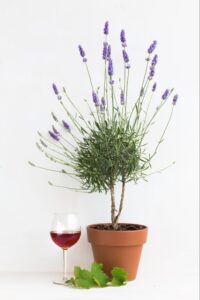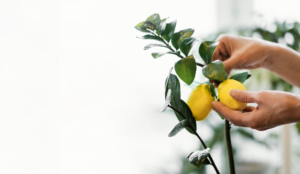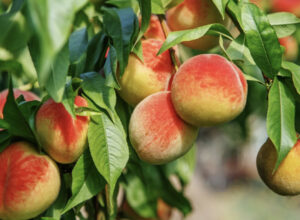Mastering Rubber Tree Maintenance: Essential Tips and Tricks

Rubber trees, scientifically known as Ficus elastica or Ficus robusta, exhibit a range of hues and statures. Their verdant leaves and hassle-free nature make them a prime choice for enhancing interior aesthetics. They seamlessly blend low upkeep with aesthetic allure, becoming an impeccable addition to modern interiors. Following some straightforward steps ensures your rubber plant flourishes optimally.
Optimal Varieties of Rubber Plants for Different Spaces
There’s an assortment of rubber plants available, each unique in its beauty and suitability for various spaces and climates. Selecting the right variety ensures your plant not only survives but thrives in its new environment.
Ficus elastica ‘Decora’ is characterized by its broad, dark green leaves, making it a popular choice among indoor gardening enthusiasts. On the other hand, Ficus elastica ‘Robusta’ stands out due to its larger leaves, making it ideal for bigger spaces.
Ficus elastica ‘Variegata’ is known for its green and cream-colored leaves, bringing a touch of color and vibrancy to any room. For those looking for something more unique, Ficus elastica ‘Tineke’ boasts a striking blend of green, pink, and cream.
Rubber Trees: Tracing Back Their Origins
Deriving their nomenclature from the white latex coursing through their veins, rubber plants have historical significance. Centuries ago, in 1400 BC, the Mesoamerican civilization utilized rubber plants as a principal component for creating bouncing balls. Moreover, certain Indian regions employ their robust root structures to craft ‘living bridges’ across streams. However, in contemporary times, they are primarily adored for their glossy texture, muted hues, and air-cleansing attributes.
Distinctive rubber plant variants include Rob, showcasing mottled patterns in shades of greens and ivories, while Robin flaunts a richer green. On the other hand, Remi and Melika have been cultivated to mimic arboreal silhouettes, and Reuben’s pinkish leaves are undeniably striking. In their indigenous environment, primarily in South Asia, these trees can soar up to 60 meters. However, domestic variants are groomed to be more compact.
Tips for Troubleshooting Common Rubber Plant Problems
Rubber plants, although hardy, can face specific issues. Recognizing these problems early and addressing them promptly can save your beloved plant from long-term damage.
Drooping leaves can indicate underwatering or a sudden change in temperature. Make sure the soil is moist, but not waterlogged, and place your plant in a stable environment away from drafts or sudden temperature spikes.
Yellowing leaves, especially at the bottom, can be a sign of overwatering. Ensure the plant pot has adequate drainage and adjust your watering schedule accordingly.
If you notice black spots on the leaves, this could be a fungal infection. Improve air circulation around the plant, reduce humidity, and consider using a fungicide if the problem persists.
Comparative Table of Rubber Plant Varieties
| Variety | Leaf Color | Size | Ideal For | Care Level |
| Decora | Dark Green | Medium | Living rooms | Easy |
| Robusta | Deep Green | Large | Open spaces | Moderate |
| Variegata | Green & Cream | Medium | Bedrooms | Moderate |
| Tineke | Green, Pink & Cream | Small | Small corners | Slightly challenging |
Rubber Tree Care Regimen
- Hydration Protocols: Ensure to hydrate the plant once the substrate nearly depletes its moisture. This hydration frequency is higher in warmer months compared to colder ones.
- Leaf Moisturization: Every few days, use a spray bottle to mist their foliage, ensuring it remains dewy.
- Optimal Positioning: Situate the plant in well-lit areas, albeit away from intense sunlight, to prevent leaf scalding. A temperature bracket between 15°C to 25°C is ideal.
- Transplantation Protocols: When required, preferably during spring, transition to a larger pot with a standard indoor plant potting mix.
- Cleanliness Measures: Periodically remove dust from leaves using a soft cloth to ensure open stomata.
- Nutritional Supplements: In warmer months, supplement with a diluted liquid fertilizer monthly.
Rubber Plants: Elevating Interiors
Beyond their obvious aesthetic appeal and air-purifying prowess, rubber plants bring with them a profound legacy. Their diverse green shades can seamlessly merge with varied interior styles, from the sparse minimalistic to the more elaborate boho-chic designs. Nestled in an aesthetically pleasing pot, these plants can effortlessly become the cynosure in a living room or an elegant augmentation in a workspace.
For those with a penchant for greenery, carving out a “plant niche” in their dwelling can be enchanting. With the rubber plant as the centerpiece, this corner, when adorned with smaller plants, ornamental pebbles, or even botanical literature, can metamorphose a mundane space into a verdant haven.
The Dual Role of Rubber Plants in Sustainability
While rubber plants serve as ornamental additions to our spaces, their significance in sustainable latex production is paramount. The non-invasive latex extraction process culminates in the creation of natural rubber—a material indispensable to several industries.
By championing products birthed from natural rubber, you inadvertently endorse sustainable methodologies and curtail the appetite for synthetic counterparts. Within the confines of your home, the rubber plant stands as a testament to the intricate dance between nature and commerce, underscoring the pivotal nature of sustainable decisions in our quotidian lives.

Conclusion
In the world of indoor plants, the rubber plant has distinguished itself as a versatile choice. Not only does it serve as a visual delight, but its rich history and sustainable significance make it a profound addition to our spaces. Its varieties cater to different tastes and spatial needs, and with the right care, these plants can thrive, purifying the air and elevating interiors. From their role in sustainable latex production to their mesmerizing shades and patterns, rubber plants remind us of the interconnectedness of nature and our daily lives.
FAQ
1. Can I propagate my rubber plant?
Yes, rubber plants can be propagated using stem cuttings. It’s best to take a cutting from a healthy plant, place it in water until roots develop, and then transplant it into soil.
2. Why are the edges of my rubber plant’s leaves turning brown?
Brown edges can be an indication of inconsistent watering or exposure to direct sunlight for extended periods. Ensure you’re following the recommended care tips for watering and placement.
3. Do rubber plants attract pests?
While rubber plants are relatively resistant, they can sometimes be susceptible to pests like spider mites or aphids. Regularly check the plant’s leaves and stems and treat them with insecticidal soap if needed.
4. Can rubber plants survive in low-light conditions?
While rubber plants prefer bright, indirect light, they can tolerate low-light conditions. However, their growth might be slower, and the leaves may lose some of their vibrancy.
5. Are rubber plants pet-friendly?
Rubber plants contain a milky latex that can be irritating if ingested. It’s advisable to keep them away from pets, especially if they have a tendency to nibble on plants.




